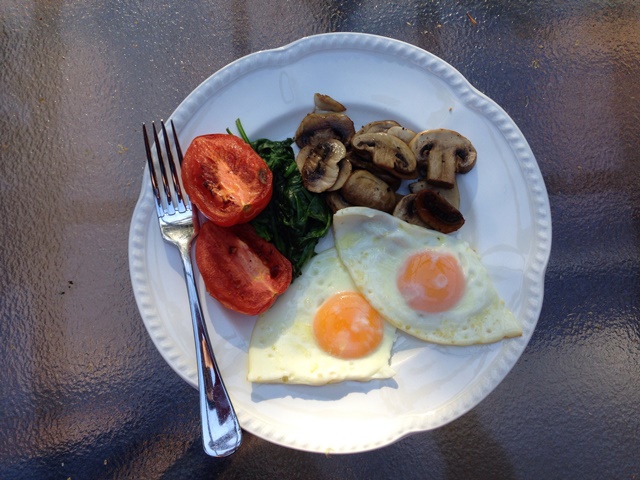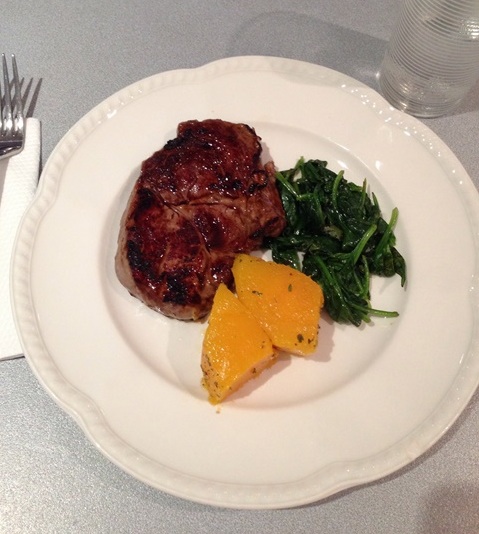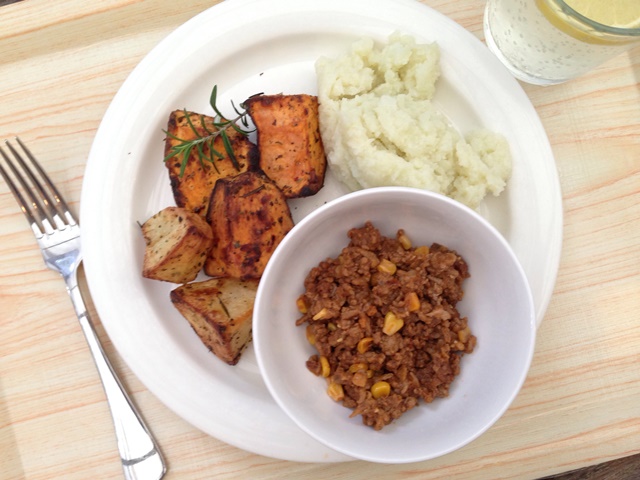- Home
- Blog
- Healthy Weight Loss
- Paleo – a great place to start but needs a tweak
Paleo – a great place to start but needs a tweak
Written by Catherine Saxelby
on Monday, 10 February 2014.
Tagged: diet, healthy eating, weight loss

I’ve never been wild about the Paleo Diet, I must admit. It’s never seemed right that we humans haven’t ‘evolved’ from our caveman days, nor our food either. I mean carrots today aren’t the same as the thin, bland, lacklustre carrots of our hunter-gatherer ancestors; meat from domesticated animals raised by mass production methods, even if grass-fed, is not wild bison roaming the plains; fruit is juicier, veggies are less bitter.
The Paleo Trend
Paleo has become a huge trend now and the devotees I’ve met are SO enthusiastic and well, passionate, that it made me stop and think once they stopped raving about what they ate! I had never heard people so committed to a way of eating before.
There is a new chain of Paleo cafes and Crossfit gyms along with a swag of Paleo-based cookbooks now on the scene.
When I was asked to road-test different diets for James Valentine, one of my fave radio hosts on ABC Radio, I accepted the personal challenge to eat Paleo for a week and really experience its strengths and weaknesses first-hand. How easy would it be to stick to (and I do need to lose a few post-holiday kilos - no comments please!)? How could it be an ideal diet for the human race with all that protein and lack of grains and dairy?
My Paleo meal plan on the Paleo Road-Test
This was roughly what I ate in a typical day on the Paleo plan. I found I was eating three big, cooked meals a day, which is contrary to my usual five-small-meal-grazing pattern.
The good news is that I didn't get that deep-ravenous hunger between meals but I did miss those comfy carbs, especially bread and my muesli.
Nutrition aside, carbs are such a super foil to proteins e.g. I missed a thin slice of toast with my morning eggs, I missed that bland homely counterpoint of steamed rice with a beef stir-fry; I missed the filling chewiness of bread; the satisfying power of mash.
Between meals, I did reach for Paleo snacks such as raw nuts, avocado, fruit, hard-boiled eggs but sometimes my stomach sent out messages for carbs. Maybe this is learned (so therefore I can UNlearn it). Maybe it's a real negative of a grain-free diet.
Also I was only doing moderate exercise e.g. walking the dog, pilates. Nothing terribly strenuous.
 Breakfast
Breakfast
- 2-3 eggs, poached or pan-fried
- wilted spinach
- grilled tomato halves
- mushrooms
Lunch
- 100g can tuna or salmon
- 1 hard-boiled egg
- large mixed salad including cucumber, tomato and avocado
- Plus a dressing of olive oil and lemon juice
Dinner
- BBQ steak or fish fillet, about 200 g raw weight
- Baked kumara chunks or cauliflower mash
- Stir-fried or steamed veggies like spinach, beans, carrots, broccoli, asparagus, broccolini
Snacks
- 1 small avocado
- Large handful of unsalted roasted macadamias
- 1 peach
How did a day of Paleo stack up nutritionally?
A rough analysis of my Day 1 intake shows that I was eating:
- Only 7500 kJ (1800 Cal) which is diet level for a moderately-active woman – most of the calories are coming from the grilled steak and macadamias.
- Protein 90 g – twice my recommended daily protein intake as expected.
- Fat 90 g – about twice my suggested daily fat intake from the nuts and extra-virgin olive oil – Paleo people love fat and fear carbs.
- Carbs – sadly, only 50 g – the bare minimum which would not stop some ketogenesis (conversion of fats to fatty acids for energy).
- Alcohol - nil.
How to improve on Paleo
- Make it more balanced or it quickly degenerates into a no-carb ketogenic diet for weight loss which it's not supposed to be. I had to work at keeping my carbs up by eating bananas, sweet potato and 3-4 pieces of fresh fruit over my week's trial.
- Accept that our early ancestors probably DID eat some wild grasses (e.g. wild rice by American Indians) and add 2 serves of healthy whole grains such as:
- 1/2 cup muesli or oats with plenty of seeds and nuts * AND
- 1 slice grainy toast (dense chewy type not the soft pappy square ones) OR
- 1/2 cup cooked quinoa or brown/black rice
3. For me I missed my yoghurt so I'd add a small tub or 150 g to my Paleo menu.
* Note: I add nuts and seeds to any muesli I have so I don't think a bowl would add much oats i.e. grains.
Paleo pros – what’s good about the diet:
- You do eat a quality diet with lots of nutrient-dense foods such as vegetables, fresh meats, fish, eggs, nuts which is great!
- You eat healthy snacks such as avocado, eggs, nuts, fruit.
- There's no processed foods allowed which eliminates the problem junk food in modern diets - gets rid of sugar, wheat, gluten, salt, processed fats.
- You aren't allowed processed meats e.g. sausages, bacon, ham, salami which have been linked with bowel cancer. Although I discovered there are many variations of Paleo diets that do allow bacon!
- You end up cooking at home a lot - there's little that fits in from fast food joints - which I applaud.
- No sugar (but honey is ok).
- Suits males and 'carnivores'.
- Easy to eat out at steakhouses, pubs (think roasts and veges) and high-end eateries.
Paleo cons:
- It's expensive.
- You eat 'big meals' based on meat, fish, chicken or eggs.
- You can't pick up anything quick on the run e.g. no toast with peanut butter, no muffin and latte, no ready-to-eat sandwich for lunch.
- Cuts out whole grains and legumes which offer fibre as well as proven health benefits.
- Cuts out dairy with its valuable calcium and protein.
- Can make you obsessed, that's all you think and talk about!
- Can't go out drinking and snacking on salty snacks or grain-based chips. No alcohol allowed which is good.
The bottom line
There is little doubt about the weight loss and health potential of a Paleo diet, however adoption in its entirety in today's world is probably a little unrealistic.
But there is nothing wrong with increasing your vegetable and salad intake, cutting out junk food and alcohol and increasing activity, all of which are aspects of the Stone Age diet that nutritionists recommend.
Use the Paleo as a starting point. Then add in a few whole grains and fermented dairy.
You may also be interested in...
Foodwatch
The Good Stuff
The Boring Stuff
© 2025 Foodwatch Australia. All rights reserved
Website by Joomstore eCommerce









